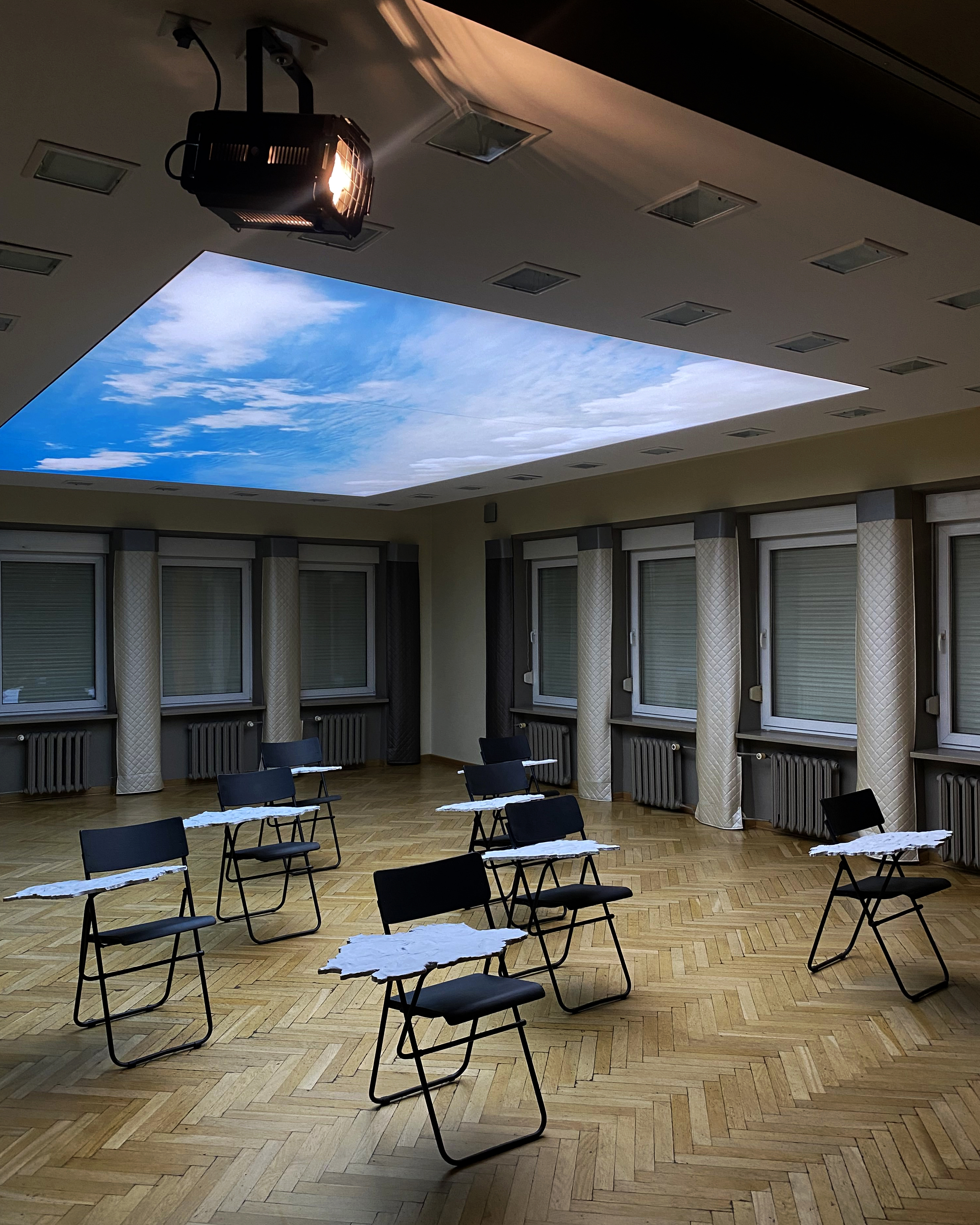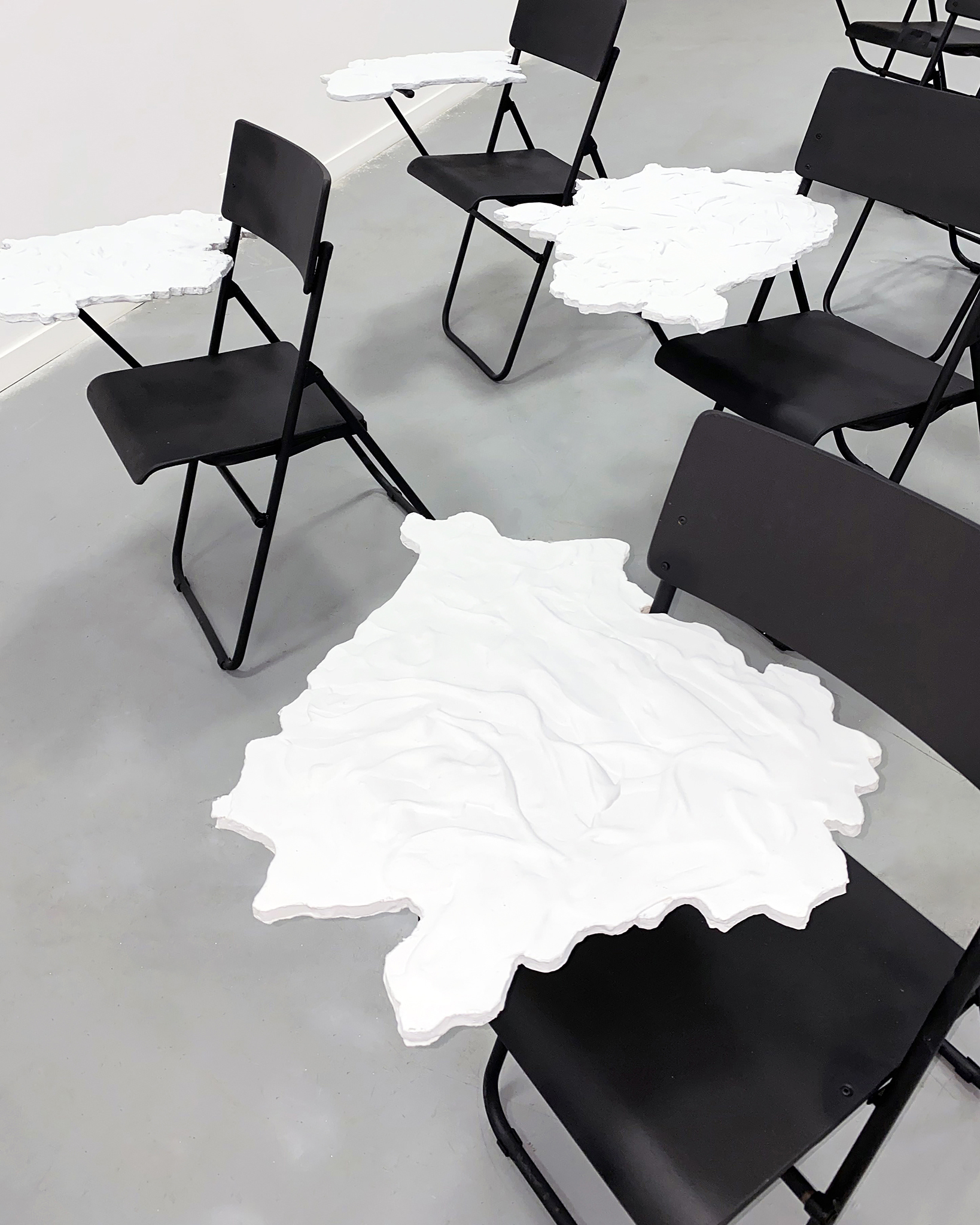TRY TO READ MY STONES
installation with maps of the historical geography of Belarus, embedded in old school chairs
Borders in Zenit. Społem fest
/ 2024. Bialystok, PL

Try to Read My Stones is dedicated to the historical geography of space in the formation of modern Belarus – a country without mountains or access to the sea, located at the crossroads of cultures and religions.
The installation consists of nine maps of Belarus embedded in old school chairs. Each corresponds to a key historical period of the 20th century (1918, 1918-1919, 1919, 1920-1921, 1922-1924, 1924-1927, 1938-1940, 1941-1945). The shifting borders reflect the violent and dynamic changes that Belarus has experienced because of regime changes, the collapse and emergence of different political systems, wars, and occupations. These events have left a deep imprint on the local culture and collective consciousness. One tangible result is the eclectic nature of Belarusian visual culture, with its tendency to freely combine meanings, references, and cultural codes.
This installation functions as a classroom of historical inquiry open to multiple interpretations and perspectives. It reflects an open-ended process. Belarusian history is fragmented and dispersed, carried by people rather than institutions and the transmission of knowledge is often horizontal, through artistic or other self-organized initiatives. The key lesson: remember as much as possible, so as not to disappear at the crossroads.
The installation consists of nine maps of Belarus embedded in old school chairs. Each corresponds to a key historical period of the 20th century (1918, 1918-1919, 1919, 1920-1921, 1922-1924, 1924-1927, 1938-1940, 1941-1945). The shifting borders reflect the violent and dynamic changes that Belarus has experienced because of regime changes, the collapse and emergence of different political systems, wars, and occupations. These events have left a deep imprint on the local culture and collective consciousness. One tangible result is the eclectic nature of Belarusian visual culture, with its tendency to freely combine meanings, references, and cultural codes.
This installation functions as a classroom of historical inquiry open to multiple interpretations and perspectives. It reflects an open-ended process. Belarusian history is fragmented and dispersed, carried by people rather than institutions and the transmission of knowledge is often horizontal, through artistic or other self-organized initiatives. The key lesson: remember as much as possible, so as not to disappear at the crossroads.


